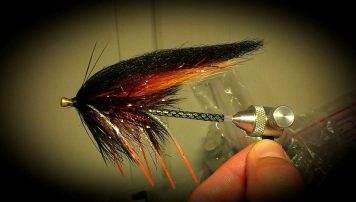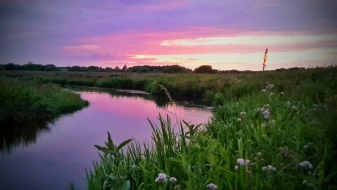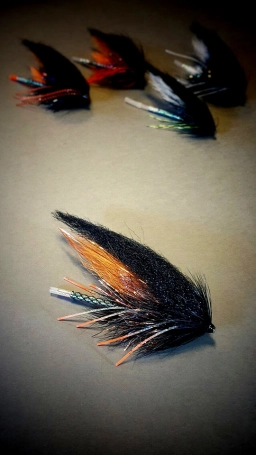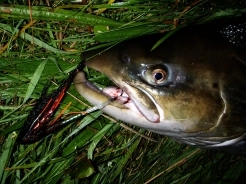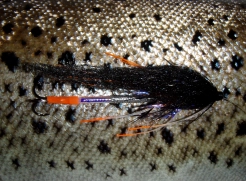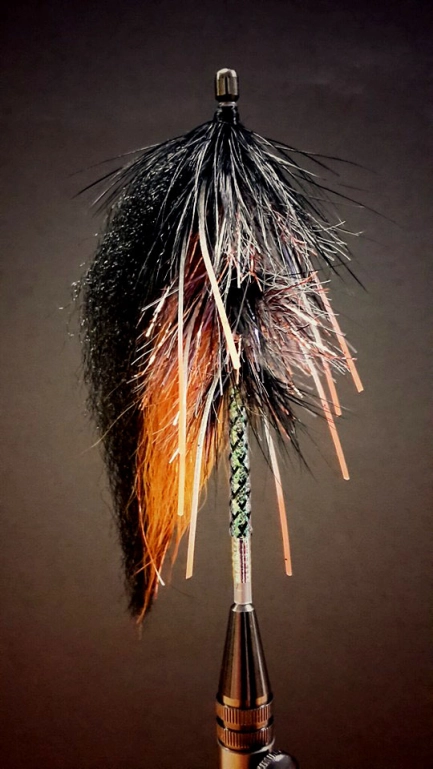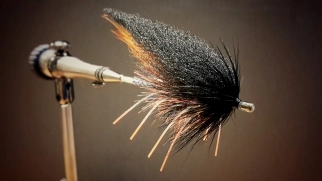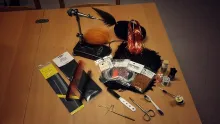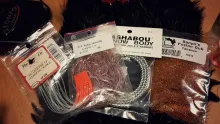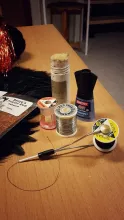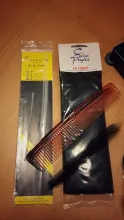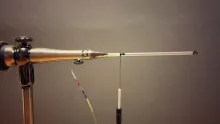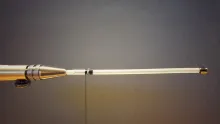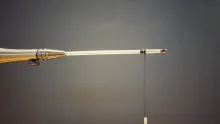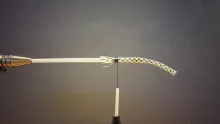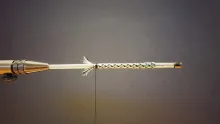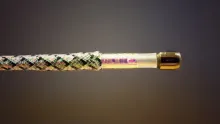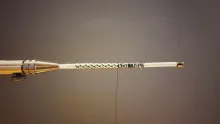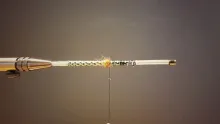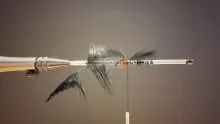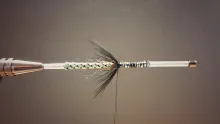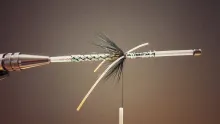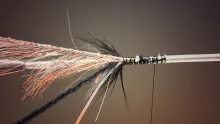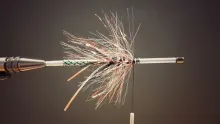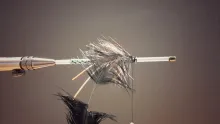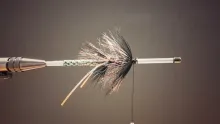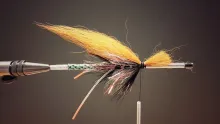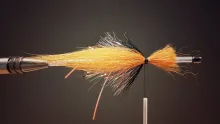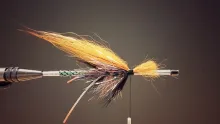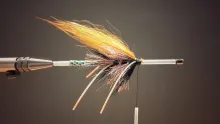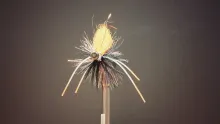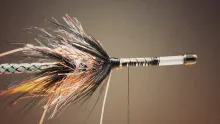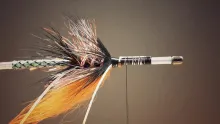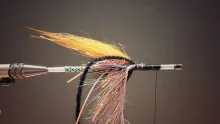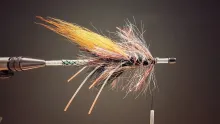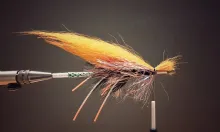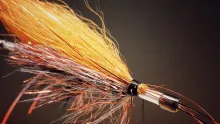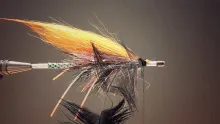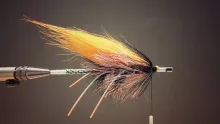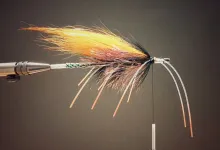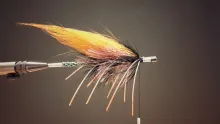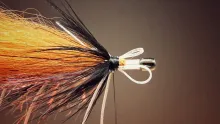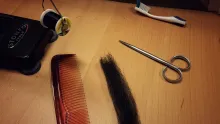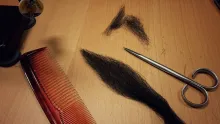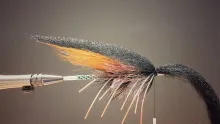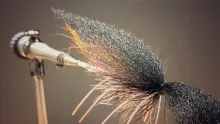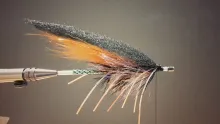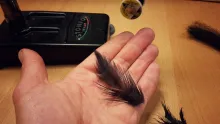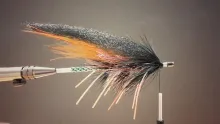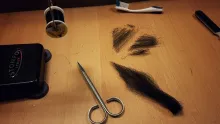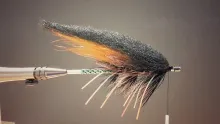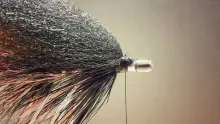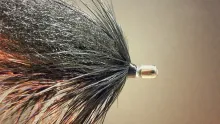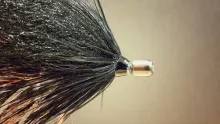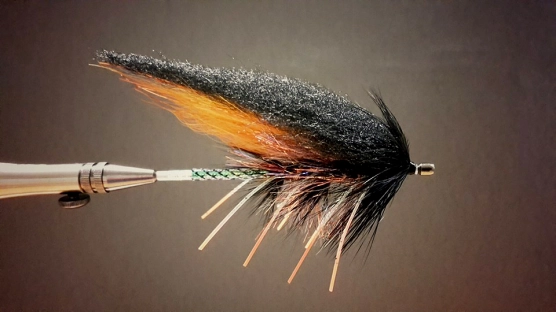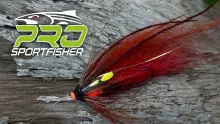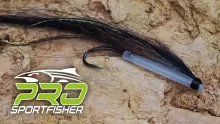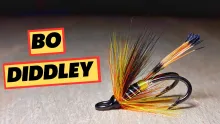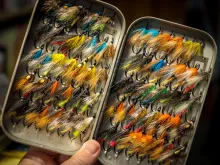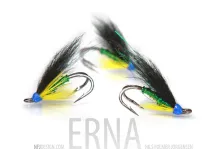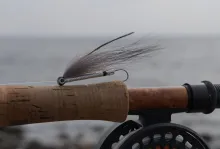Danish Allan Nørskov Johansen ties a large, gaudy and semi-crazy fly with lots of hair, flash and rubber legs for stream fishing at night for sea run brown trout.
A bit about the background and development of the fly
The fly was developed and tested with great success during the season 2008 and draws color inspiration from the beautiful salmon pattern Willie Gunn.
Rubber legs were added with inspiration from various flies such as Mattias Drugge's Mad Chinese Dragon. As a Fyggi-loving fly fisherman I immediately thought about the life that rubber legs could bring to the fly in the current, especially when you twitch the fly hard and fast through the water. I thought that the movement of the rubber legs down the side of the fly looked like the movements of the arms of a swimming
octopus, which led to the the name.
The fly can be tied in many sizes
I tie the fly in several variations with different weights and wing lengths from 5 centimeters (2 inches) up to 12 centimeters (a bit more than 4 inches). Some are slim, others fuller.
The "rich" version is the basic pattern, and the default size of most versions I use for night fishing, has a wing length of approximately 8-10 centimeters (3-4 inches).
The fly probably isn't better than many of the other big and bushy flies used in the Danish Karup river in the dark hours, but I love the color combination on the fly, and I use EP-fibers for the wing, which some might say is a bit special and quite alternative wing material on a fly for this river.
Why I use EP-fibers in my river flies
The reason why I started to use EP-fibers on my river flies, is that back in 2007-2008 I found it hard to find long black natural hair in a decent quality, particularly if I wanted a hair length over 10 centimeters or 4 inches!
As a coastal fisher, I knew a bit about some of the synthetic hairs used in coastal fish imitations, and I had good experiences with EP-fibers for fish imitations on the coast. I began to experiment with EP-fibers in the wing on my river flies, and found – a little to my surprise, actually – that it was a good material, especially for the big bushy flies.
EP-fiber is 25 cm or 10 inches long, so the length problem was solved already there. You take a bundle of the thickness and width you want for the wing and taper the material with the scissors so that the wing gets the right shape. The slightly wrinkled fibers do not absorb water, so you can cast even the biggest flies. In addition the material is light and mobile in the water.
The fish obviously had no issues with this new material, and readily munched flies with this new “nylon wing" already from the start.
In recent years, the quality of natural hair has improved, and both the Arctic fox, silver fox and tanuki can easily be used in place of EP-fibers. I have personally been so pleased with the EP-fibers, that I rarely used natural hair on the big flies. I do however love zonker strips and natural hair on smaller flies, so on the "small version" of this fly with a wing length of 5-7 cm or 2-3 inches, it is often tied with these natural materials.
Fish it aggressively and the fish will attack aggressively
I fish the fly on a sink tip shooting head or on a full intermediate shooting head. The fly is fished varied in the river depending on where the fish are. It is generally fished actively, with good speed from the opposite bank, and with a fresh and jerky retrieve up along your own bank. This induces a lot of movement in the fly.
When the fly is fished actively and aggressively over the fish in the right conditions, they will attack the fly fiercely. This results in spectacular takes, and contributes to an enjoyable summer and autumn fishing for the large sea run trout in Karup and other Danish rivers.
Good luck the the fly.
Tying the fly step-by-step
|
|
|
|
|
|
|
|
|
|
|
|
|
|
|
|
|
|
|
|
|
|
|
|
|
|
|
|
|
|
|
|
|
|
|
|
|
|
|
|
|
|
|
|
|
|
|
|
|
|
|
|
|
|
|
- Log in to post comments

